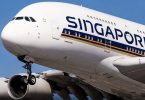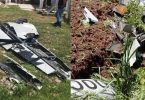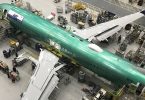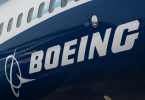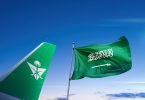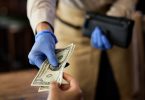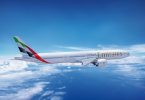It all started in 2002, when during a master dive course with a student client, Dr. Ashraf Sabri, the first ever hyperbaric doctor in the Sinai, also owner-operator of the Alexandria Dive Center (ADC), found a dark gray shadow at the bottom of the rich and fertile Mediterranean Sea.
Curious to unfold the mystery, he got closer to the “lifeless monster” sitting on the rocky-reefed seabed. “There it was, lying on its right side, split in two, waiting for us to find it after all these years,” he said as he goes deeper to a depth of 30 meters in the Mex area, 20 minutes from the eastern harbor of Alexandria and ADC.
Sabri guessed a torpedo that caused it to sink must have hit the ship. “I could hear my heart pound as we approached the wreck. My student and I realized that it was a great discovery,” he said about stumbling upon his first wreck ever. When they went up to shore, he kept asking himself why no one has ever found this wreck before and how many more wrecks could there be in Alex. How did it end up there? Why did it go down in Alexandria?
Sabri encountered the wreck of a German trawler used as a minesweeper during the Second World War. Most probably, he said a British torpedo, which split it into two main parts, but left a fraction of a section right in the middle, downed it. The rear part or stern is 24.5 meters; the middle, four meters and the front or bow measures 15.3 meters. A distance of about three to five meters separate each part, with the bow pointing at 300 south east in the direction of the shore. This proves that it had been hit while trying to reach the harbor in Alexandria. The bow section is leaning on its right side, and most of its surface is buried in sand. There must be a large cannon lying there, which can only come to light by means of sand suction or another cleaning method that will also reveal the name of the ship. The process to study the wreck had taken weeks.
For Sabri and his team at the ADC, it was just the beginning of many more wrecks to discover. He said, “As the owner of the only diving center in the governorate, I knew that the likelihood of finding further wrecks lay entirely on me and the ADC. This discovery fulfilled my dream. It was a wonderful moment.”
After his initial wreck dive success, he took to the waters again and again, not only to take dive groups and give courses, but to check out any other possible explorations. Perhaps Alexandria may have been hiding more than what he had already seen so far.
Sabri was right about his gut feeling. He found, sooner than later, an intact British World War II plane, surrounded by royal amphorae used for food and drink, a few limestone slabs as well as, columns from the ancient royal palace. It appears as though two periods of history submerged in one and the same spot.
“This was particularly puzzling. I needed answers to many questions like:
Why the plane dropped there in the middle of the harbor? What caused the
crash? Why was the plane still intact, almost in perfect shape, well-preserved except for a few broken glass? Even the pilot’s oxygen mask was still lying there,” he said.
The scene below haunted him. He needed explanations until one day, over a cup of tea with an old neighbor, he found answers.
“On a visit to this old lady’s apartment above my office in a building across the ADC, I was quite excited to mention our new discovery of the plane’s wreck. What a surprise when she told me about an incident she recalls quite vividly regarding this aircraft,” Sabri explained.
She looked back at that one fateful morning in 1942, during World War II, (when as a young girl then living with her parents in a house that overlooked the eastern harbor), she saw something strange. A British warplane was coming right at them. This plane would normally, routinely fly over Alexandria. That second, it was about to crash into the residential building.
She screamed, calling the attention of her mother. “Look, the plane is coming right at us,” she cried. However, at the last moment, the pilot managed to avoid the buildings and maneuvered his plane toward the harbor. It dipped into the sea, trailing lots of smoke behind it. Once safely away from the city and before touching the water, the pilot and his crew opened the escape latch, donned their parachutes. They cheated death in the ensuing catastrophe. She said that, at the time, people including the military, still had soldier and a gentleman’s honorable ethics and respect for civilian life. They risked their lives to protect the innocent. They would not jump out of a plane in parachutes, and let it rip into buildings and kill civilians.
Sabri confirmed he found a British plane, lying on top of the underwater palace of Mark Anthony, but was in dire need of information and clues as to its make and squadron. Later, a husband and wife guests appeared at his front door. The man said, “Unfortunately, I do not dive, and cannot see the wreck, but I believe my father was the pilot of this plane. He was one of the pilots who crashed his war plane in the harbor of Alexandria during World War II!”
“My reaction was one of utter disbelief, shock and surprise. I’ve never felt so lucky before. Here I was, meeting face-to-face a man who would unravel the mystery of this plane. Cliff Colis relayed the story of his father, Frederick Collis.
With a letter sent later to Sabri, Cliff said, “My father flight Lieutenant Fredrick Thomas Collis was initially an Air Observer and then became Navigator. He joined the Royal Australian Air Force (as he was Australian, by birth) and was seconded to the British RAF.”
Fred`s plane, the Beaufort of the Royal Air Force has been a old wreck lying on the seabed, with its bow toward the entrance channel of the main port. The younger Collis said, “ I remember an incident during his sojourn in Egypt – when they (he and his crew) were minutes away from crashing into a hotel on the Cornish (the Cecil hotel in Alexandria). His plane lost height because of technical problems. By a hairsbreadth, he aircraft narrowly clipped the shore buildings directly over the Cornish. In horror, the crew closed their eyes (including the pilot). A few moments later realizing they were still alive, the plane rolled sideways, cutting around the end of the hotel, saving the guests of the Cecil and themselves.”
Fred was supposed to fly to Malta on that day, for a convoy covert operation; however, a colleague asked to trade missions with him. Fred swapped his shift where all were killed in Malta. Lt. Collis was saved by the swap, however he got upset for losing all his kit in the crash.
The wrecks became Sabri’s passion; the discoveries, his mission. He kept looking for more making a name for himself and the dive center that has produced the most WWII finds in all Egypt’s underwater discoveries.
He found the SS Aragon, a WWII hospital ship escorted by HMS Attack located about eight miles north of the Western Harbor. It met its destiny exactly at the channel designated for boat entrances. When the dive team found the shipwreck, the site wrecks sank together (SS Aragon and the HMS Attack).
According to Sabri’s report, the SS Aragon was launched on February 23, 1905, by the first twin-crew liner company owned by Countess Fitzwilliam. It left England for Marseille in France, then Malta en-route to Alexandria, with 2700 troops onboard. While entering the harbor on December 30, 1917, it was struck by German submarine UC34. It sank immediately, taking with it 610 seamen.
The HMS Attack, a destroyer, came to its rescue but was torpedoed as well. The disaster was recorded in an unsigned letter dated March 5, 1918 – sent by an unknown officer of the SS Aragon to John William Hannay in an effort to set his mind to rest regarding his daughter, Agnes McCall Nee Hannay. Miss Hannay was a VAD who was on board during the attack. She indeed survived.
Until now, the dive team led by Dr. Sabri, continues to unravel the sea’s mysteries and hidden wrecks in Alexandria, including German warplanes sunk by the allied forces and perhaps, Cleopatra’s and Anthony’s priceless treasures.
Son of the late Captain Medhat Sabri, an Egyptian marine officer who was in-command of a huge fleet of navy ships and later, commanded all Suez Canal pilots after the channel’s nationalization, and grandson of Colonel Ibrahim Sabri, head of the Coast Guard at the Western Desert area and later became the governor of Alex, Sabri has discovered 13 wrecks, to date, in Alexandria between Abu Qir and Abu Taalat. He looks forward to studying and finding about 180 more wrecks sitting on the vast seabed all across Egypt. The doctor reconfirms they’re out there somewhere for divers and enthusiasts to explore.





